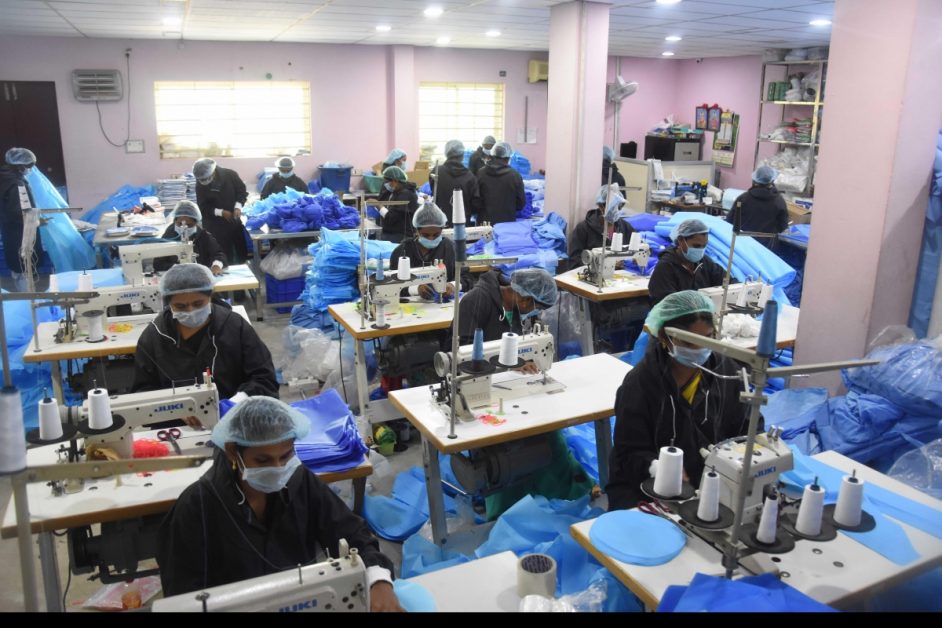Facing ruin as orders from Western brands collapsed in the coronavirus pandemic, many Bangladeshi garment factories have been given a lifeline with orders to make protective masks, gloves and gowns for export. Nonetheless, hundreds of thousands of workers who used to work in export-oriented apparel factories in the South Asian country remain jobless despite the new orders and some recovery in Western markets.
At factories in the industrial town of Savar just north of Dhaka, thousands of workers are now working eight-hour shifts, six days a week, making personal protective equipment (PPE). On the factory floor, sewing machines operated by hundreds of workers whirled loudly beside huge stacks of white and light-blue gowns. “We saw the opportunity in February and immediately we switched to PPE manufacturing,” said Syed Naved Husain, chief executive of Beximco, a major supplier to the owners of brands like Zara, Calvin Klein and Tommy Hilfiger.
Beximco last month exported 6.5 million medical gowns to US brand Hanes and it expects to export some $250 million worth of protective gear this year. “Now some 60 percent of our 40,000 workers are engaged in PPE making,” he told AFP. “Coronavirus has changed the world.”
Bangladesh over the past two decades became the world’s second-largest ready-made garment exporter after China, making clothes for the likes of Primark and H&M. Before the pandemic, it accounted for around 80 percent of the country’s $40 billion annual exports and employed more than four million people, many of them women from poor rural villages. But when the world started to go into lockdown, the country’s 4,500 manufacturers saw shipments plunge by a staggering 84 percent in April. About $3.2 million of orders were either cancelled or withheld, according to the Bangladesh Garment Manufacturers and Exporters Association (BGMEA). Most factories — shut down from the loss of contracts and the country’s own virus lockdown — sacked or furloughed hundreds of thousands of workers, sparking numerous protests.
There has been some recovery in orders, but Khan Monirul Alam Shuvo, spokesman of the BGMEA, told AFP: “The amount is much lower compared with what we got last year. In June our factories operated at 55 percent capacity.” The resumption of work in Bangladesh — which is reeling from its own COVID-19 outbreak — means extra safety measures like social distancing and face masks. One factory owner admitted to AFP, however, that “distancing is almost impossible in the factories because of the nature of the job”. Now, the BGMEA said, many manufacturers were becoming hopeful again as they pivot towards medical wear.
At least 30 factories have started manufacturing PPE since the start of the pandemic and the “number is growing”, Shuvo said. Other companies who had already made protective clothing on a limited scale quickly scaled up their plants to meet the demand when Western clients came knocking. “Just three days ago, we got an export order to make 20 million surgical gowns. All our factories are now booked for the entire year,” said Fakir Apparels director Mashiur Rahman Shommo. Fakir has turned five of its factories into PPE plants and hired another 400 workers, and now expects to export $200 million worth this year. Ahsan H. Mansur, a former International Monetary Fund executive now at the Dhaka-based Policy Research Institute (PRI), said with the industry running at 50-percent capacity, the move to PPE production will “bring some relief”.
Source: The Economic Times






